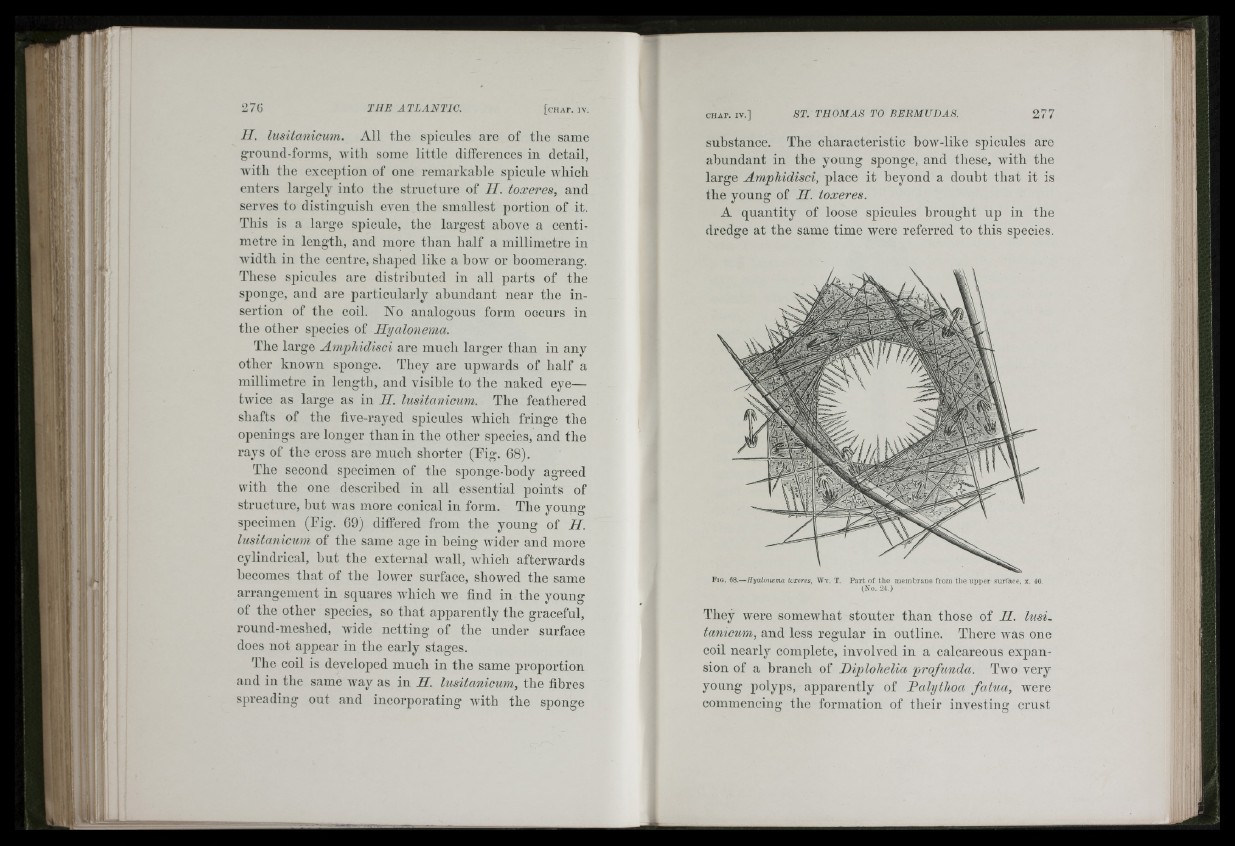
in ;. -
.Siiak- Ü
;
.ff
■ tete -
." U - tIl ff 1
mw-
276 T H E A 7 'L A N T I C . [C H A F . IV.
IT. lusttcmicum. All the spicules are of tlic same
ground-forms, with some little differences in detail,
with the excej)tion of one remarkable spicule Avhich
enters largely into the structure of II. toxeres, and
serves to distinguish even the smallest portion of it.
This is a large spicule, the largest ahove a centimetre
in length, and more than half a millimetre in
Avidth in the centre, shaped like a hoAv or boomerang.
These spicules are distrihuted in all parts of the
sponge, and are particularly abundant near the insertion
of the coil, hio analogous form occurs in
the other species of Hyalonema.
The large Amphidisci are much larger than in any
other knoAvn sponge. They are upAvards of half a
millimetre in length, and visible to the naked eye—
tAvice as large as in II. lusitanicum. The feathered
shafts of the fiA'e-rayed spicules Avhich fringe the
openings are longer than in the other species, and the
rays of the cross are much shorter (Eig. 68).
The second specimen of the sponge-hody agreed
with the one described in all essential points of
structure, but Avas more conical in form. The young
specimen (Eig. 69) differed from the young of II.
lusitanicum of the same age in heing Avider and more
cylindrical, hut the external Avail, whicli afterwards
becomes that of the lower surface, showed the same
arrangement in squares Avhich we find in the young
of the other species, so that apparently the graceful,
round-meshed, Avide netting of the under surface
does not appear in tlie early stages.
The coil is developed much in the same proportion
and in the same way as in H. lusitanicum, the fibres
spreading out and incorporating Avith the sponge
CHAP. IV .] S T . T H O M A S T O B E R M U D A S . 277
substance. The characteristic bow-like spicules are
abundant in the young sponge, and tliese, Avith the
large Amphidisci, place it heyond a douht that it is
the young of II. toxeres.
A quantity of loose spicules brought up in the
dredge at the same time were referred to this species.
F io . 68.— fl y a lo m m i tvxeres, Wy. T. P a r t o f th e m em b ra n e from th e u p p e r su rla c e , x. 40.
(No. 24.)
They were somewhat stouter than those of H. lusi.
tanicum, and less regular in outline. There AA'as one
coil nearly complete, involved in a calcareous expansion
of a branch of Diplohelia "profunda. Two very
young polyps, apparently of Balythoa fa tu a , were
commencing the formation of their investing crust